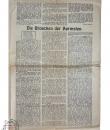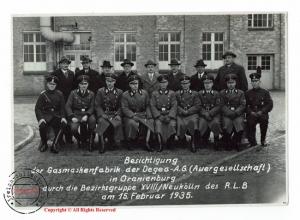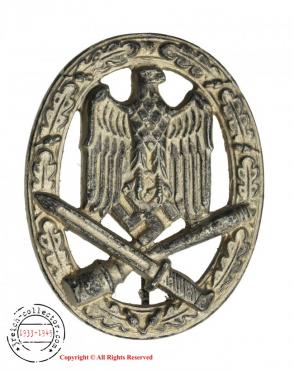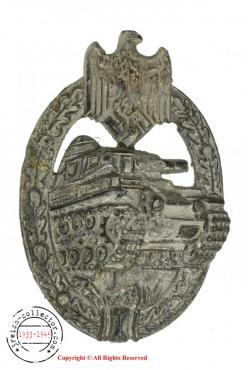Nazi Ideology Newspaper "Die Freikorps" - Nr. 2 - 1933 - "Who Pays The Hitler's House?" Very Rare. Check story !
| Price: | $420.00 |
Nazi Ideology Newspaper "Die Freikorps" - Nr. 2 - March 1933 - Entitled "Who Pays The Hitler's House?". Very rare ! Publisher Wilhelm Ferdinand Stegmann (born June 13 , 1899 in Munich ; † December 15, 1944 in Ipolyság ) was a German National Socialist politician and SA leader . From 1930 to 1933 he was a member of the Reichstag for the NSDAP .In December 1932, Stegmann came into conflict with his Gauleiter Julius Streicher : the Gauleitung had withheld funds that were intended for the SA. On January 13, 1933, Stegmann gave up his Reichstag mandate after being pressured to resign. Johann Appler replaced Stegmann in the Reichstag. On January 18th, Stegmann became leader of the newly founded Franconian Freikorps and from February onwards he also published the magazine Das Freikorps, a combat paper for the cleanliness and purity of the National Socialist idea . On January 19th, Stegmann resigned from the NSDAP, one day earlier than his expulsion from the party and the SA for “mutiny”. Around 1,000 members joined Stegmann's new organization, mainly SA members from Franconia and groups in the Ruhr area. Between 1,500 and 2,000 NSDAP members left the party along with Stegmann. In the Reichstag election campaign in March 1933, the Freikorps supported Hitler because he represented “true National Socialism,” but agitated against Streicher.
After the Reichstag election, Stegmann's Freikorps and its magazine were banned on March 13, 1933. Stegmann himself was arrested on March 23, 1933 and taken into “ protective custody ” in a concentration camp – officially because of a planned assassination attempt on Julius Streicher. Almost three years later, on February 14, 1936, Stegmann was sentenced to 18 months in prison by the special court at the Nuremberg-Fürth regional court . Until 1938 he was held in Nuremberg prison, the Ebrach prison , a Gestapo prison in Berlin and in the Buchenwald concentration camp . The release took place following Himmler's intervention; Stegmann then took over a state domain in Braunschweig.
“For probation” and to “restore honor,” Stegmann was drafted in 1944: As an SS Obersturmführer in the reserve , he was sent to the SS Special Unit Dirlewanger , a unit in which former convicts and concentration camp inmates served. He died on the Eastern Front in the fighting for Budapest .











